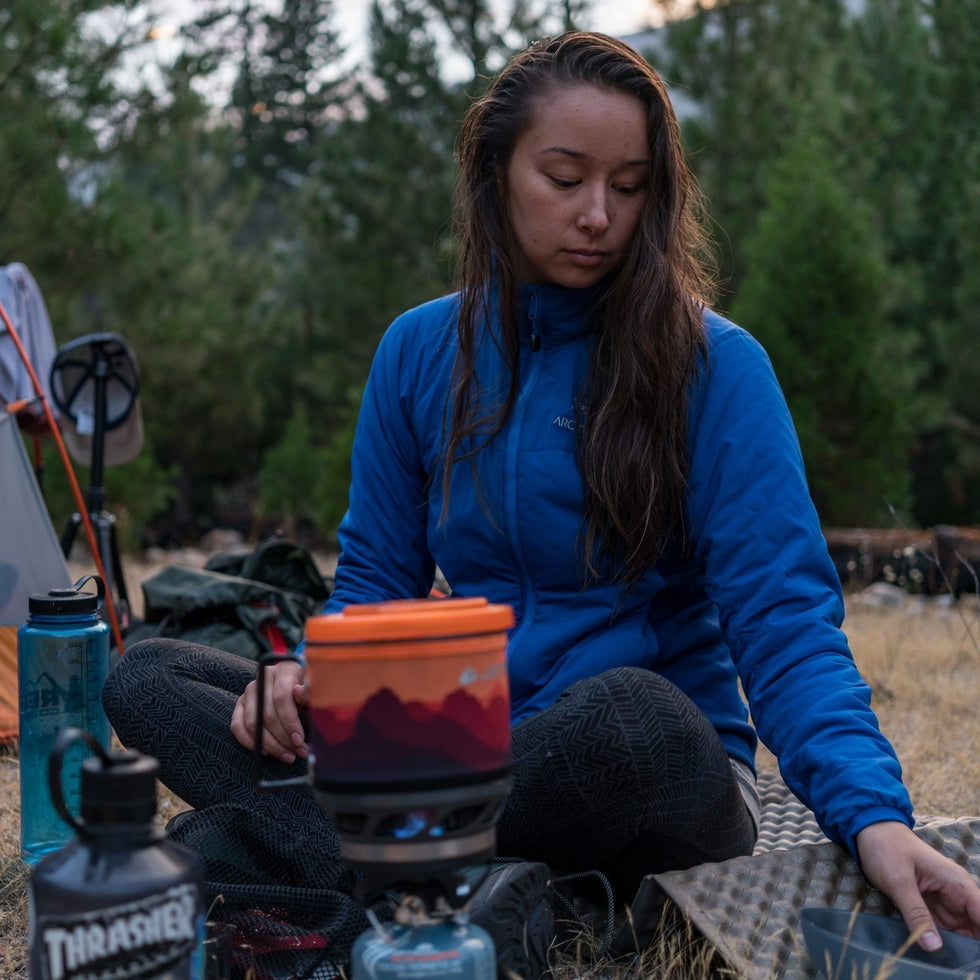When you're out in the wilderness, exploring the great outdoors, it's important to make sure that your body has the fuel it needs to keep going. Whether you're planning a short day hike or a multi-day backpacking trip, meal planning is a critical component of your preparation. In this article, we'll cover everything you need to know to plan your meals and snacks for your next outdoor adventure.

Caloric Needs for Backpacking
When planning your backpacking meals, it's essential to take into account the number of calories you'll need to consume each day. The number of calories you require will depend on several factors, including your body weight, the intensity and duration of your activity, and the terrain you'll be traversing. As a general rule, backpackers should aim to consume between 2,500 and 4,500 calories per day.
If you're hiking on moderate terrain, you'll likely need to consume around 3,000 to 3,500 calories per day. If you're carrying a heavy pack or hiking in difficult terrain, you may need to consume closer to 4,000 or 4,500 calories per day. It's important to note that these are just rough estimates, and your individual caloric needs may vary. It's always a good idea to consult with a doctor or registered dietitian if you have specific questions or concerns about your nutritional needs.
Breakfast
Start your day off right with a nutritious breakfast. Depending on your preferences, you may opt for hot or cold options. Some backpackers prefer to pack instant oatmeal or cereal with powdered milk and nuts for added protein and healthy fats. Others may choose to bring instant eggs, breakfast burritos, or even pancakes. Just be sure to pack a lightweight stove and fuel if you plan to cook your breakfast.
Snacks
Snacks are a critical part of your backpacking meal plan, providing a quick and easy source of energy throughout the day. Some popular snack options for backpackers include:
- Nuts and seeds: almonds, cashews, walnuts, pumpkin seeds, and sunflower seeds are all great options for quick and easy snacking.
- Dried fruit: raisins, apricots, and figs are all high in calories and easy to pack.
- Energy bars: there are countless options on the market, from protein bars to energy gels to fruit bars. Look for bars with at least 200 calories and 10 grams of protein for sustained energy.
- Jerky: beef, turkey or even salmon jerky can be a great source of protein and salt, especially if you're sweating heavily.
- Cheese: hard cheese like cheddar or gouda can be a great snack on the trail, providing protein, fat, and salt.
Lunch
Lunch is often the easiest meal to plan for backpacking, as you can stick with simple, no-cook options. Some popular lunch ideas for backpackers include:
- Tortilla wraps: fill tortillas with peanut butter and jelly, hummus, veggies, or tuna salad for a quick and easy meal.
- Crackers and cheese: pair crackers with cheese and summer sausage for a protein-packed lunch.
- Trail mix: combine nuts, seeds, dried fruit, and chocolate for a delicious and energy-packed meal.
Dinner
Dinner is where you can get a little more creative with your meal planning. Some backpackers choose to bring dehydrated meals or freeze-dried options, which can be a quick and easy option. Others may opt for pasta or rice dishes, or even bring along fresh ingredients like veggies and meat for a more gourmet meal.
Some tips for planning your backpacking dinners include:
- Consider the weight and space of your ingredients: Keep in mind that you'll be carrying your food with you, so you want to make sure that your ingredients are lightweight and won't take up too much space in your backpack. Dehydrated meals can be a good option since they are lightweight and take up minimal space.
- Plan for variety: While it's tempting to stick to the same meals day after day, variety can help keep you motivated and energized on the trail. Consider packing different meals for each day or mixing and matching other ingredients to create new dishes.
- Don't forget about seasonings: While salt and pepper can be a good start, consider bringing along other spices and seasonings to add flavor to your meals. Some popular options include garlic powder, onion powder, cumin, and chili powder.
- Hydrate: Remember to drink plenty of water throughout the day, especially during meals. Staying hydrated is essential for your health and performance on the trail.
|
Classic Spaghetti with Meat Sauce |
Classic Spaghetti with Meat Sauce |
Spicy Chicken Curry |
Herbed Mushroom Risotto - Double Serving |
|---|---|---|
|
|
|
|
| View Product | View Product | View Product |
Proper meal planning is key to a successful backpacking trip. By taking the time to plan out your meals and snacks ahead of time, you can ensure that you have the fuel you need to keep going and enjoy your time in the great outdoors. Remember to consider your individual caloric needs, pack lightweight and nutritious options, and don't forget to hydrate. With a little preparation and planning, you'll be well on your way to a successful and enjoyable backpacking trip.




